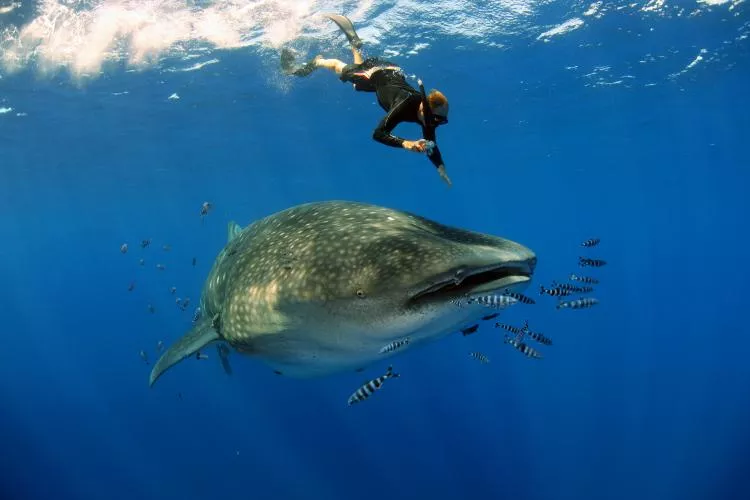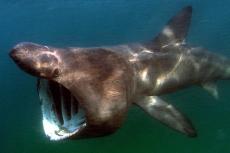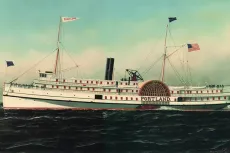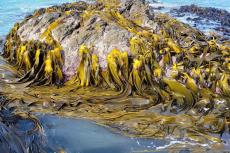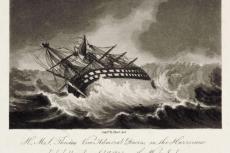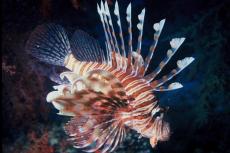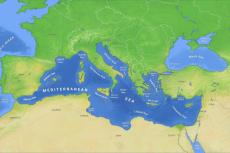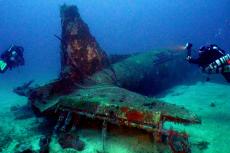It’s been almost 15 years since my first visit to the Azores. I was studying law then and was on my first diving trip, with all of eight dives written down in my brand new logbook. Six years later, I was living in the Azores. I had traveled and dived in many remote locations by then, Africa, Australia, Asia… but one place never left my mind—those nine small islands that stood alone in the middle of the Atlantic.
Contributed by
Factfile
Nuno Sá is a Portuguese underwater photographer and author who resides in the Azores.
A regular conttibutor for several magazines, including National Geographic, Sá is co-author of The Azores Diving Guide—Portugal’s first published diving guide.
For more information, visit: www.photonunosa.com
So, I hung my law degree diploma at my parent’s house in Portugal and left for the Azores with a single goal in mind: to live in and discover a place with one of the highest levels of biodiversity in the world, and maybe even become an underwater photographer.
And it came to pass. After five years of diving in these nine islands as a professional nature photographer, I have seen the world’s largest animal—the majestic blue whale—and dived with orcas, pods of sperm whales, dolphins, turtles, sharks, devil rays, whale sharks and many other fascinating creaturs. But I am sure I can spend the rest of my life on these islands without discovering all of the secrets the Azorean seas have to reveal.
Although whale and dolphin watching are the main tourist attractions of these nine islands, more and more divers are discovering this group of islands by exploring a myriad of dive sites where the visibility is startling and the presence of large pelagic fish unique. Located in the middle of the Atlantic Ocean, almost half way between the United States and Europe, the Azores are a small oasis in the middle of a blue desert for many species that annually venture on Atlantic migrations.
Located in the frontier of cold and nutrient rich currents coming in from the north and a ramification of the warm waters of the Gulf Stream coming in from the south, the upwelling effect of the only landmass between these two continents creates an explosion of life every year.
The beginning of this cycle starts with the spring “bloom” as water starts to get warmer and filled with microscopic algae, giving it a greenish hue. With it come the biggest and smallest of the ocean’s beings. As a frenzy of small zooplankton organisms feed on the algae, they will soon serve as nourishment to giant travelers crossing the ocean.
Blue whales, fin whales, Bryde´s whales, sei whales and minke whales arrive, stopping in these nutrient rich waters, gathering strength to complete their migration north to the cold Arctic waters. Undoubtedly, these large baleen whales will meet pods of sperm whales—the Azores’ resident giant of the seas, which hunts giant squid in the deep waters surrounding the archipelago.
When the first days of summer arrive, water gets clearer by the day as the food chain develops, the microscopic plankton gives way to large bait balls, and a multitude of predators follow. As the warm summer breezes arrive so do the more tropical species, such as large pods of Atlantic spotted dolphins, loggerhead turtles, devil rays, whale sharks and finally, large schools of fish.
Nine gems—one by one
The archipelago of the Azores is constituted of nine islands and spreads through 500km (311 miles). These nine islands are the most isolated in the North Atlantic, situated 1,300km (808 miles) from the southwestern coast of mainland Portugal. Diving is possible on all of the islands of the archipelago and range from shore dives to cave dives and wreck dives as well as diving in distant underwater mountains where dozens of manta rays and big schools of fish are common sights.
Divided in three groups (Eastern, Central and Western), the islands can be very close to each other in a group (just four miles from Pico to Faial in the central group), but up to over a hundred miles away from the next group. Each of these islands is so different from the other that it is hard to describe them as a whole. What they do have in common is peace and quiet, breathtaking volcanic landscapes and cows everywhere—roads included!
Underwater, these islands are as different as on the surface, with blue sharks on one island and whale sharks on another, or a World War II shipwreck on one island and 15th and 16th century wrecks on another. Coastal dives are, however rather similar throughout the archipelago. Being islands of volcanic origin, underwater rock formations can be very impressive, with large arches originated by ancient lava flows and deep caves with numerous connections to various chambers.
The typical sea life includes large dusky groupers, curious trigger fishes, several species of little nudibranchs, morays and octopi in amongst the rocks. Colorful red hogfish are normally more common at a greater depth—20 meters or more—where the black coral (Antipathella wollastoni) branches are also quite common. Many small and colorful species can be sighted, such as peacock wrasse, parrotfish, Azores chromis (Chromis limbata) and Mediterranean rainbow wrasse.
Large schools of pelagic fish such as guelly jack, almaco jack, yellowmouth barracuda, Atlantic bonito or—for the lucky few—a majestic devil ray, a turtle or an ocean sunfish are occasionally sighted on coastal dives, but the offshore underwater seamounts are definitely the place to visit for the big pelagics and are what make the Azores a unique diving destination.
Western Group
Of the nine islands of the Azores, Flores and Corvo are the most distant and secluded, also being the westernmost point of Europe. Only ten miles separate these two islands, however, they are 130 miles away from the nearest island group. With less than 4,000 inhabitants—Flores Island and Corvo Island with 400—the so-called “Western Group” still offers the closest we can get to nature in its purest state, with waters that are pristine, unpolluted and almost untouched by humankind.
But visiting these two islands is not just a unique experience underwater, as these islands have breathtaking landscapes and are off the beaten track of the more touristic islands. Flores, in Flores Island, literally means flowers in Portuguese, and the island can best be described as “Hawaii in the Atlantic”. Beautiful waterfalls cut through the green landscape and lagoons, and there are flowers everywhere. Corvo, on the other hand, is only one-eighth the size of Flores with a total area of 17 sq km, thus being the smallest in the archipelago.
Although small, Corvo Island offers its visitors, without a doubt, one of the world’s most unique and beautiful landscapes. The giant crater of the extinct volcano that occupies almost the totality of the island is composed of several small lagoons surrounded by green meadows filled with flowers, as the outer ridge of the crater falls steeply into the blue sea. UNESCO has recently recognized the uniqueness of this natural heritage nominating it a Biosphere Reserve.
The only village on the island is the small village of Vila do Corvo, a picturesque town with white houses and cobblestone streets.
Due to its geographical isolation from islands with more developed fishing industries, the islands of Flores and Corvo still have a diverse and abundant marine life. Large schools of yellowmouth barracuda can be found here as well as almaco jack and jack fish, an abundance of red hogfish, blacktail combers, various types of morays and so many other typical species of the Azores. On the boat crossing from Flores to Corvo many species of whales, dolphins, sea turtles and sea birds are usually sighted.
Corvo’s highlight is undoubtedly the dive with the big dusky groupers at the Caneiro dos Meros dive site, located just 300m from the harbor. This is a natural reserve (amazingly it was voluntarily created by the island’s fishermen) where you can dive with up to eight or ten large and friendly dusky groupers.
Flores, on the other hand, also has many diving spots on its extensive coast, one of the most famous ones is Gruta do Galo—a dive in a magnificent cave that ends under a freshwater waterfall in the sea. Most divers who visit the Azores “Western Group” take advantage of the proximity of the two islands to visit and dive on both of them. After all, it is just a one-and-a-half-hour boat ride between the two islands.
Central Group
Five islands stand relatively close by in the central group of the Azores. Amongst them Pico and Faial are the most visited by divers and are only four miles apart. Together with São Jorge Island, they form the islands of the “Triangle” with daily boat connections between them.
The islands of Terceira and Graciosa are relatively isolated from the rest of the group, so connection by boat can be more difficult. Graciosa has excellent coastal dives, cave dives and a very good wreck dive—the Terceirense shipwreck—located just a few hundred meters from the coast. Terceira Island also has excellent coastal dives but is mostly known for its archeological dives.
Terceira’s capital, Angra do Heroísmo, is a UNESCO world heritage site. Monuments and colorful historic buildings are reminiscent of its historic importance in the 15th and 16th centuries as the main shelter harbor for ships crossing the Atlantic, with many stories of pirate ships and naval battles to be told. The historic importance of this city is present above and under the water, with several archeological diving sites. Although time has taken its toll over most of the fragile wooden ships, there are still many artifacts and wrecks that evoke ancient times.
One of the most interesting dives is the “anchor graveyard” where you can dive amongst over 40 large anchors, which range from the 16th to the 20th century, left by ships in distress, some of them over three meters long. The lidador shipwreck, a 19th century steamship that sunk just 50m from the coast when crossing from Portugal to Brazil, marks its presence in the bay—its shadow visible from the surface on days of calm sea.
Faial Island is well known as one of the world’s most famous marinas, where sailors crossing the Atlantic usually stop for a few days, giving the small town of Horta a mystical look, with colorful sails filling its bay. Just across the strait channel, Pico Island seems to still be erupting from the sea floor into a volcanic mountain over 2,000m high.
Both of these islands are the main access points to two of the Azores’ most famous diving experiences: the Princesa Alice offshore seamount and diving with blue sharks in high seas.
Diving in offshore seamounts are amongst the best dives these islands have to offer, and the Princesa Alice dive site is definitely second to none. Located about 45 miles off Faial island (a three-hour trip) this seamount erupts from the sea floor from over 500m deep up to around 35 meters. Offshore dives in high seas are completely unpredictable, but big groups of curios devil rays and big schools of up to thousands of large pelagic fish, such as yellowmouth barracudas, jacks, and especially Atlantic bonitos, are among the main attractions.
Several species of sharks, ocean sunfish or manta rays can also be sighted. Of course, being the Azores home to over 20 different species of whales and dolphins, the trip to Princes Alice always includes some ocean travellers such dolphins, sperm whales or loggerhead turtles.
These two islands are also one of the few places in the world where you can dive with one of the seas most beautiful predators—the blue shark. Diving with blue sharks is done “in the blue”, either snorkelling or scuba diving, and is definitely an unforgettable experience. Just minutes after a container with bait hits the pristine water, subtle shadows can be seen shooting from hundreds of meters deep, straight to the surface.
Cautious and elusive at first, as confidence is gained, these predators of the deep are extremely curious, approaching and inspecting every diver, sometimes even slightly brushing divers, receiving a tactile test from its sensitive lateral line. On a normal dive you can have between three to five blue sharks around you. If you are lucky, you can also see the open ocean’s top predator and fastest fish—the mako shark.
Pico is also the birthplace of what has become the tourist symbol of the Azores—whale watching. The Azores is one of the world’s top whale watching destinations, with the chance to spot 23 different species, and with large pods of sperm whales all year long. Along the mountainous coast of Pico and Faial islands several small looking points are daily occupied by “Vigias” (look outs), armed with binoculars and a radio tracking the horizon for whales and dolphins, and giving directions to the fast zodiacs.
On a typical summer day it is normal to sight up to four or five different species of whales and dolphins as well as several species of sea birds, turtles and who knows what else. Swimming with dolphins in high seas is an unforgettable experience. Swimming with whales, however, is not allowed.
São Jorge Island—the third island of the “Triangle”—is less known for its diving than for its breathtaking landscape and offers excellent coastal dives as well as a well-known offshore dive—Ponta dos Rosais. This is an excellent dive with many schools of pelagic fish, however the typical seamount groups of devil rays are rarely seen here.
Eastern Group
The two Islands of the eastern group are about 50 miles from each other and over 70 miles from the central group. The largest island—São Miguel—is the capital of the Azores, and is known for its natural beauties, with amazing landscapes marked by green mountains and blue lagoons. It is, however, also the most developed island.
Coastal dives can be less thrilling due to a larger fishing industry. However, the presence of a World War II shipwreck just five minutes from the marina makes this the most visited diving spot in the Azores.
Built in the United States in 1943, the Liberty Ship took part in the world’s largest military operation—operation Overlord off the coast of Normandy. Originally called Edwin L Drake, it would find its resting place 21 years later off the coast of São Miguel with the name, Dori.
Today, this 130-meter-long wreck is visited by hundreds of divers every year. Located on a sandy bottom just 16m deep, this is probably the best and easiest accessible wreck dive in the Azores, with many parts of the ship still intact and the typical species of the Azores sea bottom present in great numbers.
Santa Maria is probably the Azores “best kept secret”—a small island with white sandy beaches and completely off the beaten track, with whale sharks and groups of dozens of devil rays just 30 minutes from the harbor! Although big groups of devil rays are typically seen on offshore seamounts, Santa Maria is the only island of the Azores where you can see dozens of these majestic fish slowly gliding around divers, on a daily basis and just three miles from the coast.
This happens in a place called Ambrósio, and you can literally see over 50 devil rays on a single dive, as well as large schools of pelagics and the occasional whale shark.
Up to three years ago, whale sharks were a very rare sight and mostly described by tuna fisherman after encounters in high seas. However, since 2008, the biggest fish of seas has chosen the island of Santa Maria to spend the summer. Nonetheless, spotting this colossus of the seas is not for the faint of heart, as they usually appear about six miles from the coast, so it typically involves taking a whole day specifically to search for them and being prepared for many hours out at sea.
But when you do get lucky, the experience is priceless: pristine blue waters several hundred meters deep, shades of sunlight descending beneath you, and a massive whale shark followed by hundreds or thousands of tunas hitching a ride through the Atlantic—simply amazing.
Around 25 miles south from Santa Maria (or about 45 miles north of São Miguel) are two of the Azores most known offshore dives—Formigas and Dollabarat. Formigas has a series of small rocky islets in the middle of the ocean, where a small, uninhabited lighthouse was constructed to prevent ships from colliding (unfortunately there where many before it was built). Dollabarat is an underwater seamount just three miles from Formigas, so making the trip usually involves diving both sights.
What both dives have in common is amazing visibility (up to 40m and more) and a chance to see oceanic pelagic fish such as big schools of wahoos, yellowmouth barracudas, jacks, and Atlantic bonitos, as well as curious devil rays, hammerhead sharks and the occasional manta ray or whale shark.
Between dozens of devil rays at Ambrósio, going out for the whale sharks, taking a trip to Formigas and Dollabarat (including a few species of whales, dolphins and sea turtles that will probably be seen on the way there), and a few sunsets at Praia Formosa beach, it is no surprise that the divers that are lucky enough to live these experiences like to keep this island a secret.
Visiting the Azores
These nine islands definitely offer some world-class dives and a unique experience of diving in a less touristic destination with amazing landscapes and a lot of peace and quiet. With reasonable coastal dives and the chance to have some unique experiences in offshore dives, the Azores has dives for every taste and level of experience.
However, thinking you can visit all of the Azores’ “highlights” in just one trip is simply an illusion. The distance between islands makes some of the more isolated ones a destination of their own. However, it is possible to dive two or three islands in a one to two week trip and still have time for some whale watching and sightseeing.
When to go: July to September are the months with the warmest water, best weather, best visibility and best chances to sight pelagic species. Water can get as cold as 16-17Cº in the winter, and an easy 25Cº in the summer. Air temperature is not surprisingly pretty much the same as the water, since these islands are very small and hugely influenced by the mass of water around them.
Getting there and around: There are airports and daily connections between all the islands, as well as regular boat connections during the summer. TAP and SATA have direct flights to the Azores from Lisbon and several other European capitals as well as Boston, Oakland, Montreal and Toronto.
There are two official boat operators in the Azores as well as plenty of private taxi services. Transmaçor (www.transmacor.pt) only operates in the central group, while Atlanticoline (www.atlanticoline.pt) connects all the Islands. Boat connections work very well in the Western Group (Flores and Corvo) and also between the Triangle Islands (Faial, Pico and São Jorge) with several daily connections.
However, moving between any other islands can sometimes be very time consuming and well worth the flight. However, if you don’t mind taking a day off for the trip, it can be very nice (and cheaper) to take a trip along the islands.
Other than that, just relax and get into the Azores’ easygoing ambiance. After your first visit, I’m sure you will feel you have discovered a small paradise in the Atlantic. ■

